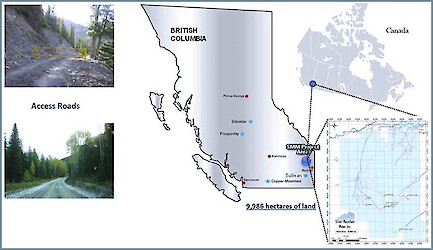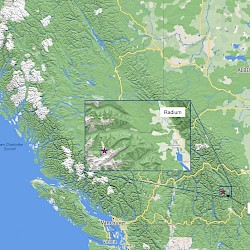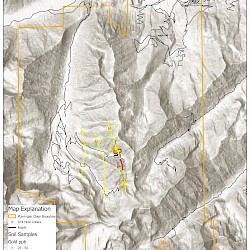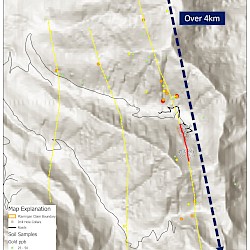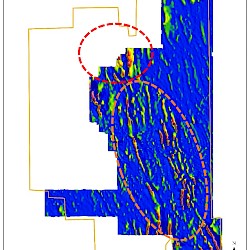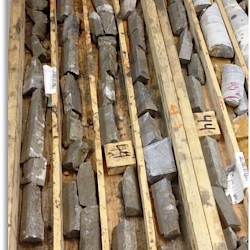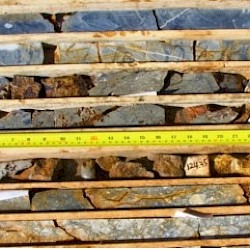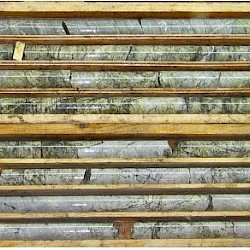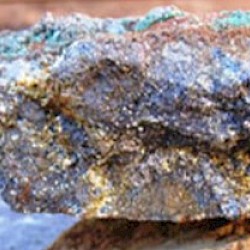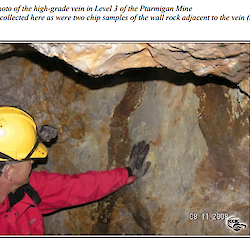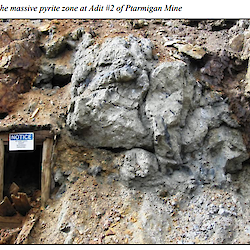-
Projects
Ptarmigan
The technical information contained on this page has been reviewed, verified, and approved by Derick Unger, CPG, VP Exploration of NevGold. Mr. Unger is a "Qualified Person" as defined by National Instrument 43-101, Standards of Disclosure for Mineral Projects.
History
The geology of the Ptarmigan basin is well documented and includes information acquired over a 100 year period. Mineralization is interpreted to be structurally controlled in various folds and faults. Historical smelter records from 1959 document multiple shipments totaling 32.2 tonnes, averaging 2,638 g/t Ag (77 oz/t) and 1.7 g/t Au. High-grade ore was also reportedly produced from the Ptarmigan Mine, yielding approximately 89,000 oz of Ag, with average grades of 4,215 g/t Ag, 5.4 g/t Au, 0.58% Cu, 0.54% Pb and 0.13% Zn. The Ptarmigan Mine and Upper/East Ptarmigan are interpreted to host silver- and gold- bearing, pyrite mineralized sulphide bodies
Location
Ptarmigan Property is a 9,900 hectare land package located 50 kilometres west of Radium, BC, and 300 km west of Calgary, AB. The property is accessed via logging roads. Several historic mining trails provide access to various workings in the project boundary.
Local infrastructure, supplies and experienced mining workforce are readily available throughout the district. There is an active processing facility located approximately 410 km from Ptarmigan at Trail, BC (Teck Resources Smelting & Refining Complex)
Geology
The Ptarmigan Mine lies within the Purcell Mountains, consisting of a parautochthonous terrane comprised of Helikian to Middle Devonian age strata. The stratigraphy of the area has been correlated to four discrete epicratonic sequences: (1) the Mesoproterozoic Belt-Purcell Supergroup, (2) the Neoproterozoic Windermere Supergroup, and the (3) lower and (4) upper Palaeozoic sequences of the Cordilleran continental margin. Minor basaltic rocks of the Nicol Creek Formation, dated at 1075 Ma, and various sills are hosted in the Belt-Purcell sedimentary sequences. During the Cordilleran Orogeny, from the Middle Jurassic to Late Cretaceous, these strata were thrust eastwards and deformed into a north-plunging anticline, referred to as the Purcell anticlinorium, above a crustal scale ramp (Pope, 1990). The Ptarmigan Mine is hosted in strata correlated to the Belt-Purcell Supergroup, juxtaposed across an unconformity and/or a fault-bounded contact with strata correlated to the Windermere Supergroup (Lydon, 2007; Paiement et al., 2007) (Fig. 7-1).
Mineralization
The anomalies are interpreted to represent composite manto- and vein-style mineralization hosted within the carbonate (i.e. dolomitic) succession of the Middle Dolomite of the Mount Nelson Formation.
Two styles of mineralization are found at the Ptarmigan Mine: high grade Cu-Ag-Au veins and Ag-Au-Cu massive pyrite manto type deposits. Mineralization is hosted in brecciated quartz veins and crackled dolomite developed from intensive silica flooding along north-south faults and fracture systems. Cross-faults and drag folds have played key roles in localizing subsequent sulphide mineralization.
Figures

Register to receive news via email from NevGold Corp.
* Required FieldsForm not found

